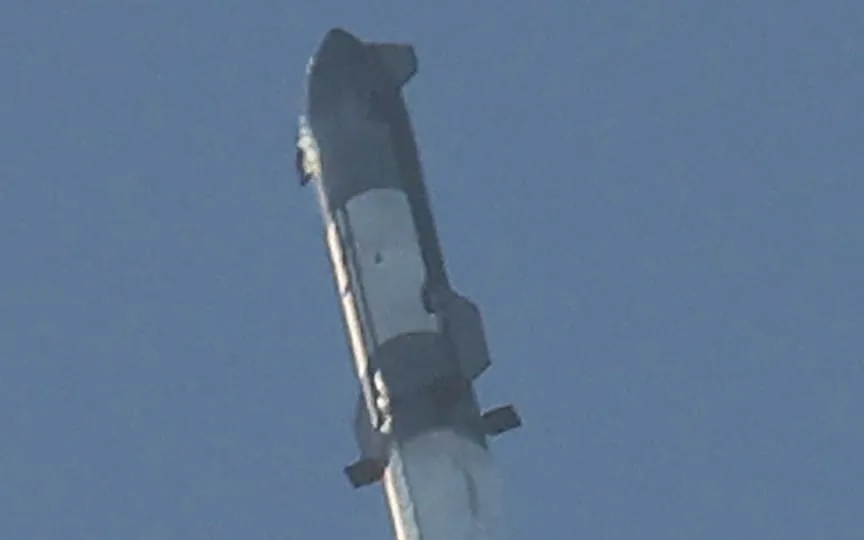SpaceX Starship Soars High, But Test Flight Ends in a Boom!
During Saturday’s test flight, SpaceX successfully launched its mega rocket Starship, but unfortunately, both the booster and the spacecraft were lost in a series of explosions just minutes after liftoff.
The rocket ship reached space after liftoff from South Texas before suddenly losing contact. SpaceX officials said it appears the ship’s self-destruct system blew it up over the Gulf of Mexico.
Minutes earlier, the separated booster had exploded over the bay. By then, however, the work was done.
Saturday’s demo lasted about eight minutes, about twice as long as the first test in April, which also ended in an explosion. The last flight ended when the ship’s six engines were almost ready to fire to get it around the world.
At nearly 400 feet (121 meters) tall, Starship is the largest and most powerful rocket ever built, with the goal of carrying humans to the moon and Mars.
“The real icing on the cake today, that successful takeoff,” said SpaceX commentator John Insprucker, noting that all 33 booster engines worked as planned, unlike last time. The booster also separated seamlessly from the spacecraft, which reached an altitude of 92 miles (148 kilometers).
Added commentator Kate Tice: “We got so much data and it will all help us improve our next flight.”
SpaceX founder Elon Musk watched from the launch controls at the southern tip of Texas near the Mexican border, near Boca Chica Beach. At the company’s headquarters in Hawthorne, Calif., employees cheered as the Starship took off in the morning. The room fell silent as it was clear that the spaceship had been destroyed.
SpaceX had aimed for an altitude of 150 miles (240 kilometers), just high enough to send the bullet-shaped spacecraft around Earth, before it landed in the Pacific Ocean near Hawaii about an hour and a half after liftoff, without a full orbit.
After the flight demo in April, SpaceX made dozens of improvements to the rocket and launch pad. The Federal Aviation Administration approved the rocket for flight on Wednesday after confirming that all safety and environmental considerations had been met.
After Saturday’s launch, the FAA said no injuries or public damage had been reported and that an investigation was underway to determine what went wrong. SpaceX cannot launch another Starship until the inspection is complete and repairs are made, the FAA added.
NASA estimates that Starship will land astronauts on the Moon by the end of 2025 or shortly thereafter. The space agency awarded SpaceX a $3 billion contract to make it happen by transferring astronauts from its Orion capsule to a starship in lunar orbit before landing on the surface.
“Today’s test is an opportunity to learn — then fly again,” NASA Administrator Bill Nelson said via X, formerly known as Twitter.
The starship is 34 feet (10 meters) taller than NASA’s Saturn V rocket, which carried humans to the moon more than half a century ago, and 75 feet (23 meters) taller than NASA’s Space Launch System rocket, which flew around the moon and back. without a crew last year. And it has about twice the lift.
As before, the Starship had nothing worthwhile to experiment with.
Once Starship is proven, Musk plans to use fully reusable mega-rockets to launch satellites into Earth orbit and send equipment and people to the moon and eventually to Mars.




